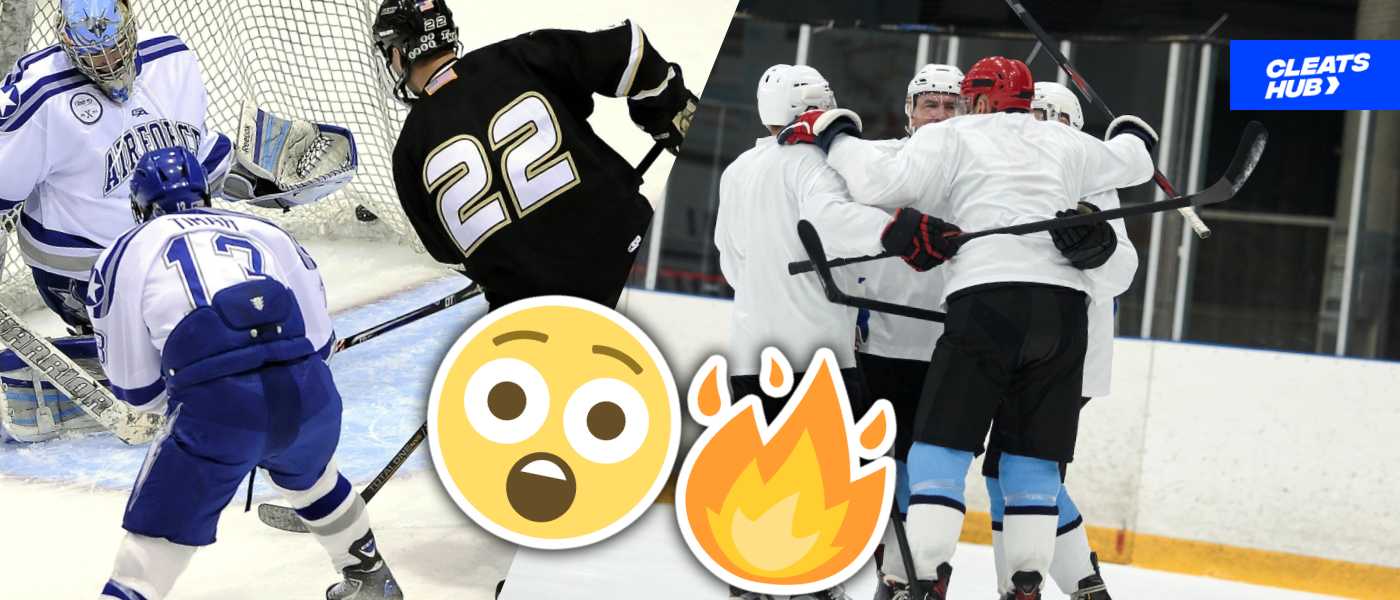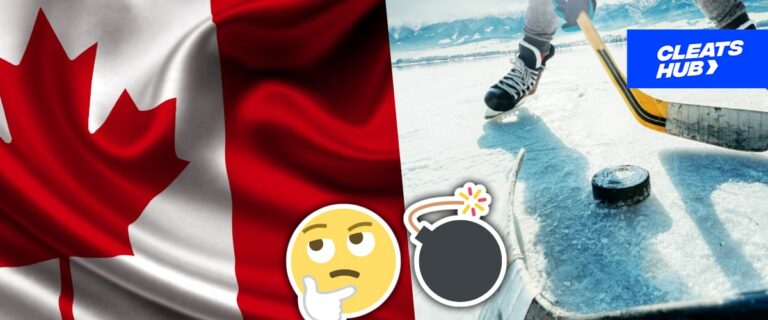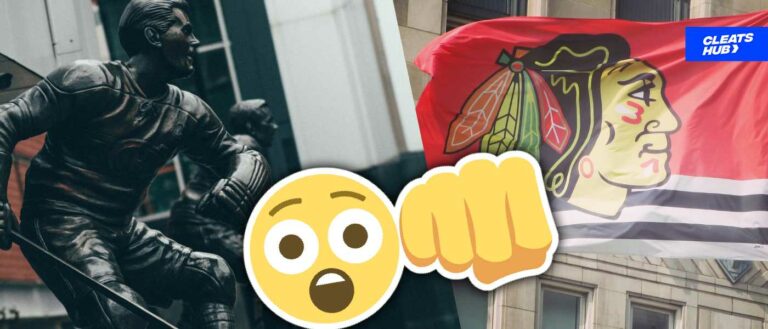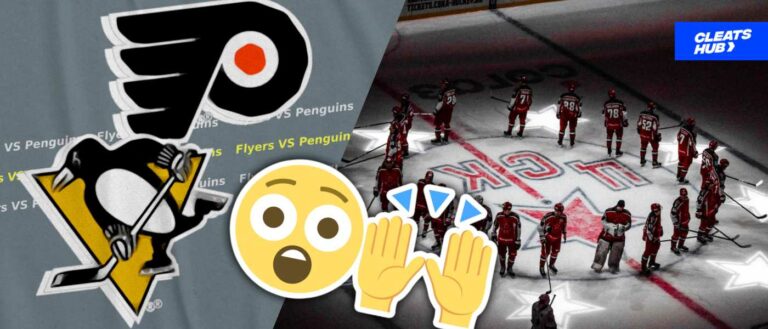Scoring In Hockey And How It Works – Scoring Goals & Assist
You must have heard of players scoring in ice hockey, but what does scoring really mean? In this article, we will be looking at how scoring works in hockey, how goals are scored, and what counts as a goal and hockey assists. Also, we’ll look at the average goal in the NHL regular season.
How Does Scoring Work In Hockey?
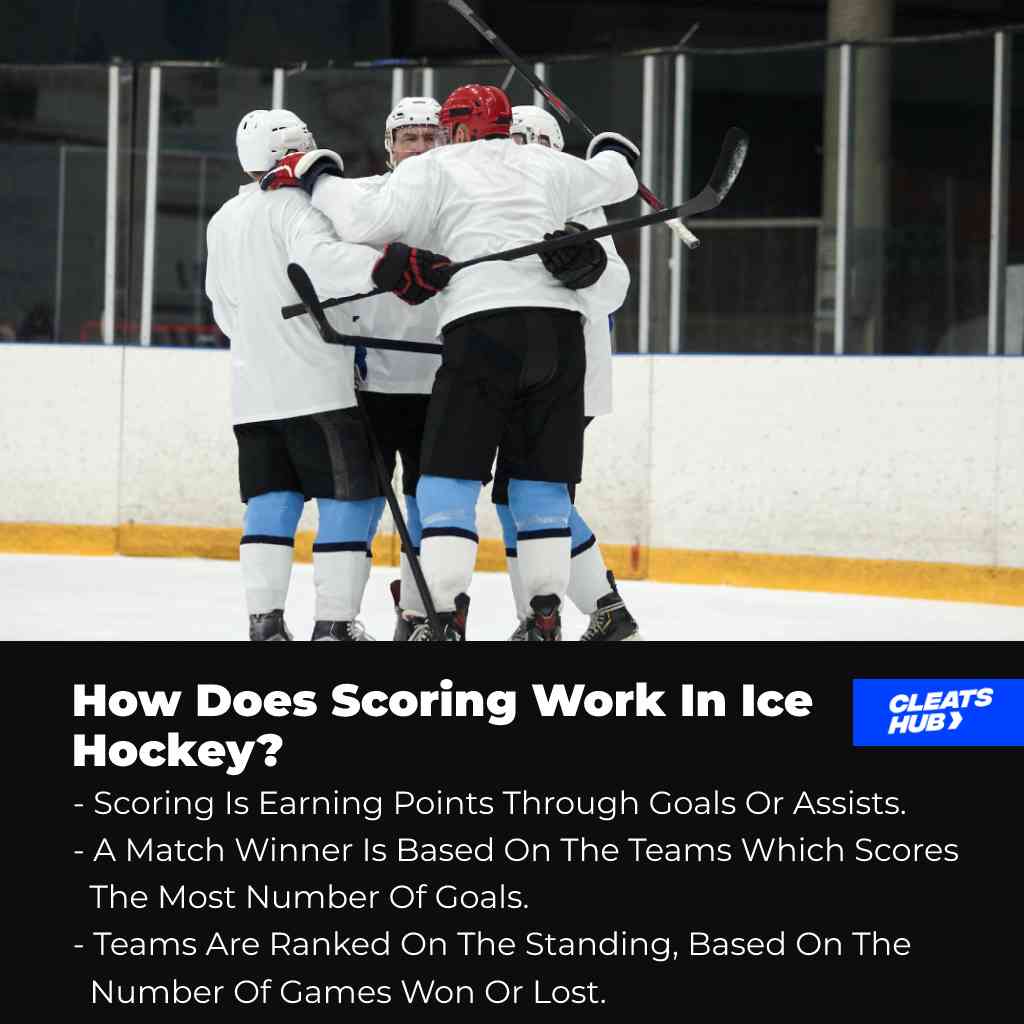
Scoring in hockey is the process of earning points by either scoring goals or making assists. Scoring goals or assists increase the points of players on their statistics.
In ice hockey games, the scores used to decide the winner or loser in a match are the number of goals scored by each team. The team with the most amount of goals scored is made the winner of the game.
The scores of both teams in an ice hockey game (NHL) are usually visible on the scoreboards. If a team has an even number of goals scored at the end of the regulation time, the game is moved on to overtime. If a deciding goal is not made by the overtime periods, the game is taken into a shootout.
When it comes to league standing, NHL teams are ranked based on the number of points they have scored (games won or lost).
Scoring Goals In Ice Hockey
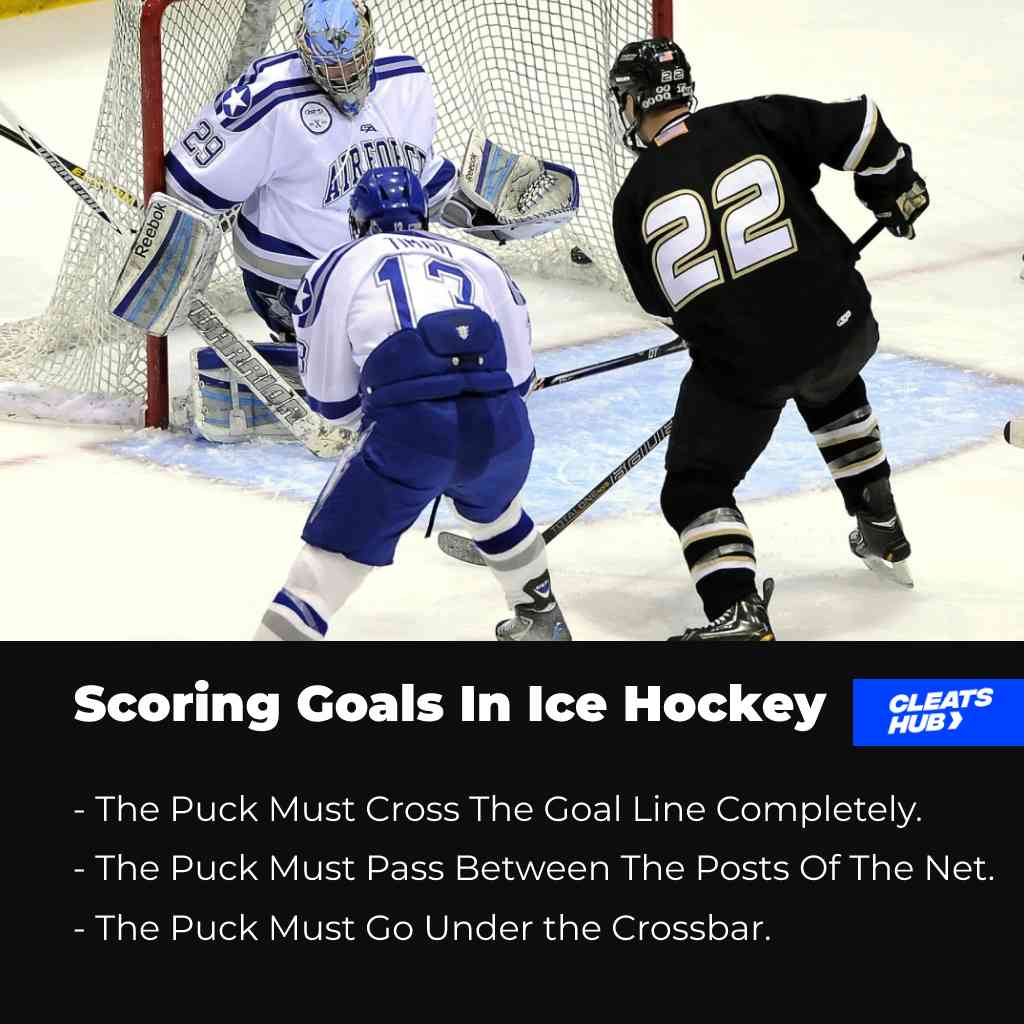
Scoring a goal in ice hockey is a situation when a player shoots the puck into the net of the opposing team. When a goal is scored by any player on a team, the team gains one point on the scoreboard.
Also, a point is attributed to the player for the goal in his personal stat. This point also counts toward his total point for that game, season, and career.
However, not every shot made toward the net is called a goal. For a goal to be acknowledged, it has to meet the following conditions:
- The puck must cross the goal line completely. If any part of the puck remains on the red goal line before it is played out of the goal net, a goal will not be allocated.
- The puck is required to pass in between the two posts of the net. If a shot angle is too wide and the puck does not cross the red goal line in between the two posts of the net, a goal is not acknowledged.
- Finally, the puck must pass under the crossbar of the goal net. The crossbar of a net is the horizontal bar that connects the two vertical poles to form a net. If a goal crosses the red goal line and passes in between the two poles but goes over the crossbar of the net, a goal is not counted.
Average Number Of Goals In The NHL
The average number of shots in an NHL game depends on the season it is played. Moreover, it depends on if we are talking about the regular season, preseason, or playoff season. The average number of goals scored per game in the NHL for the 2022-23 season is 3.14 goals per game.
The team with the most goal per game (G/GP) for the 2022-23 regular season was the Edmonton Oilers with a goal-per-game average of four. This means they averaged four goals in every game they played for the regular season.
Also, for the 2021-22 regular season, the average number of goals in the NHL was 3.11 goals per game. The team with the highest average goal per game for the 2021-22 regular season was the Florida Panthers with a 4.1 goal average
The chart below shows the average goal per game for the last six seasons in the NHL (regular seasons).
| NHL Season | Average Point Per Game |
| 2022-23 | 3.14 |
| 2021-22 | 3.11 |
| 2020-21 | 2.89 |
| 2019-20 | 2.98 |
| 2018-19 | 3.06 |
Goal Violations In Hockey

Not every goal is accepted in ice hockey. Besides, apart from the conditions for the puck to be counted as a goal, a goal is not accepted in ice hockey if some actions which are deemed violations occur.
- Kicking Or Batting The Puck Into The Net
Kicking the puck with the puck into the net or using the hands to direct the puck is a goal violation in ice hockey. Any goal scored through this method is not accepted as a goal with the goal being disqualified.
Therefore goals that are deflected or re-directed with players’ skates or gloves are not acknowledged. However, in instances in which a player is stationary when the puck deflects off his skate, the goal is allowed.
- Goalie Interference
Goalie interference is a scenario when a player from the opposing team makes avoidable contact with a goalie or intentionally cuts the line of vision of the goaltender.
It is not limited to the goal crease, but any action of the opposing team to hit, push or shove a goalie hindering him from protecting the puck around the net is goalie interference. If a goal is scored and goalie interference is seen to have occurred, it can be revoked.
In addition, it can only be made by members of the opposing team and it attracts a minor penalty to the offending player.
- High Sticking Infraction
High sticking that leads to a goal is a violation in ice hockey. If the stick of the player that hits the puck into the net goes above the crossbar before hitting the puck, a high sticking infraction can be called.
- Puck Deflection From Official
Finally, any puck that deflects off an official into the net is not acknowledged as a goal.
Scoring Assists In Ice Hockey
Assists in ice hockey is a pass that is made to a player that scores a goal. Assists in ice hockey are just as relevant as goals, however, the number of assists a team has does not determine who wins or loses a game.
A pass is not counted as an assist in ice hockey until the assist leads to a goal. When an assist leads to a goal, the player who made the assist is awarded an assist point in his personal stat.
In addition, just like goals, the assist points also add up to make the total game point of a player for a match, season, or career. When going through NHL player stats, it is very common to obverse that players usually have more goals than assists.
Even goalies who are unable to score goals in rare cases get assist points for passing the ball to a player who makes a goal.
Types Of Assist In Ice Hockey
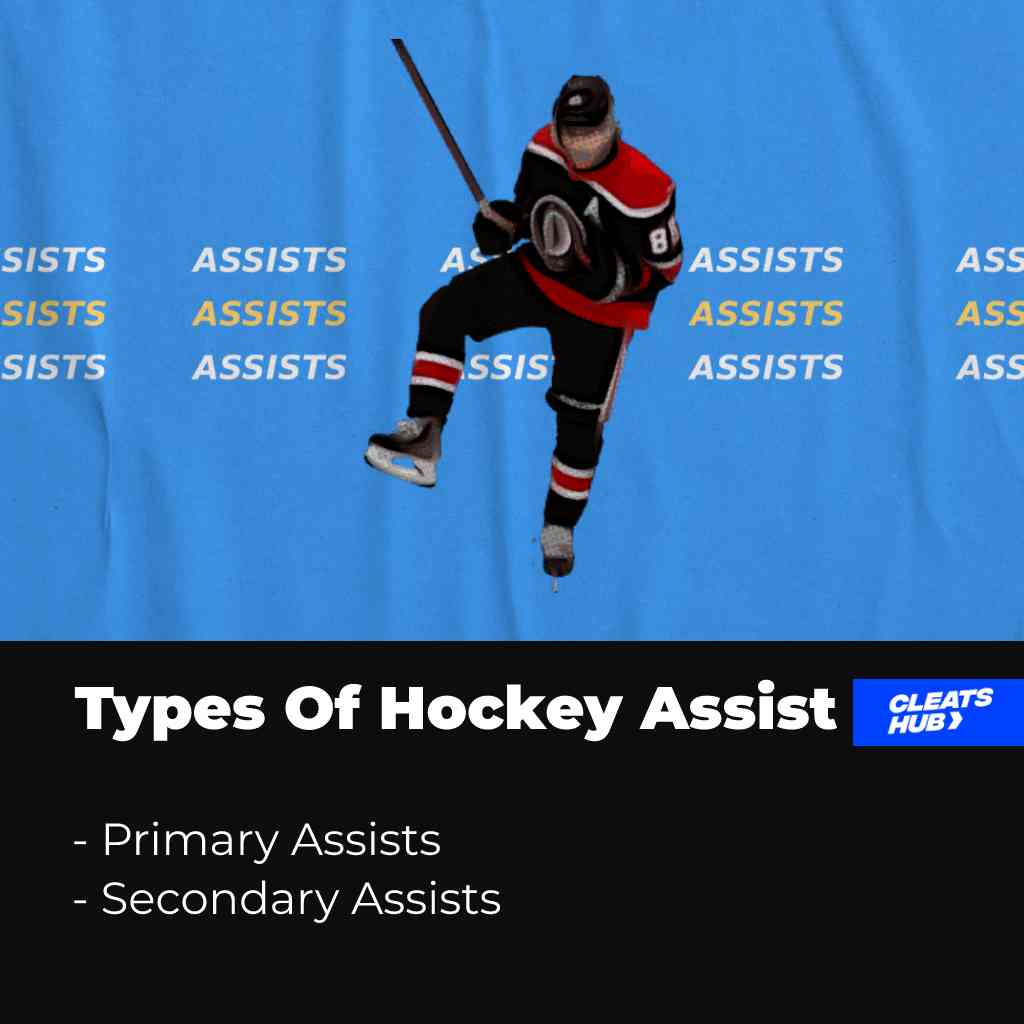
In ice hockey, there are two types of assists. Both are awarded one point, irrespective of the type of assist. The assists are:
- Primary Assists
This is a type of assist in ice hockey given to the last player to make a pass to the player that scores a goal. - Secondary Assists
This is the type of assist given to the second to the last player to make the final pass to the player responsible for a goal. This means it is an assist given to a player that passes to the player who made the primary assist.
Conclusion
Scoring goals and assists in ice hockey helps boost the points of players in the NHL. There have been many NHL legends who have made a tremendous impact by setting records in goals and assists.
A very famous example is Wayne Gretzky (the Great One) who holds the record for most career goals scored and assists by an NHL player. After decades, his legacy still stands unbeaten.
So this brings us to the end of this article. Thanks for reading.
Psstt…. The Top Performing Cleats

